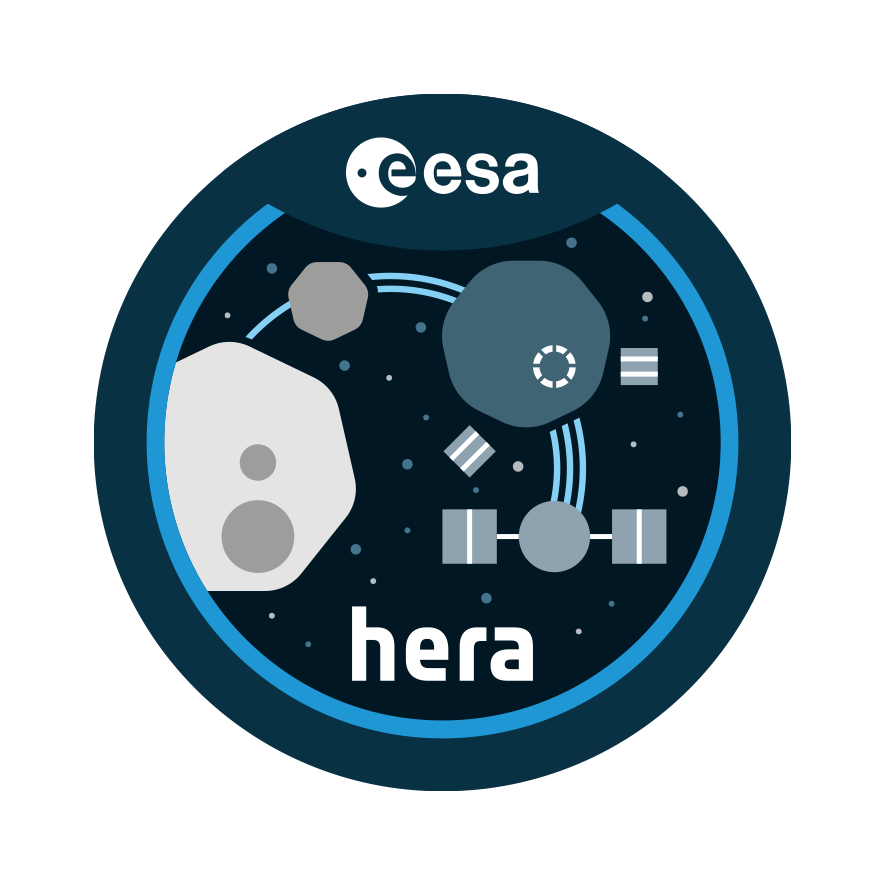Science
Exploring a Binary World
While Hera is designed as a planetary defence mission, it will also contribute substantially to asteroid science. Beyond the headline results of measuring the effectiveness of kinetic impactor deflection technology, Hera will:
Make the first rendezvous for a first comprehensive characterisation of a binary near-Earth asteroid (NEA), noting that 15% of small asteroids are binaries, allowing a precise comparison with theoretical models and assessment of the binary NEA production mechanism.
Probe for the first time the subsurface and interior properties of an asteroid.
Constrain the surface structure and regolith mobility on both Didymos and Dimorphos, thereby allowing a first insight into how material properties may affect asteroid satellite formation.
Provide a remarkable opportunity to study the surface geophysics of two objects of different size and surface gravity, which probably formed from the same material.
Obtain the first in-situ characterisations of the properties of an asteroid, Dimorphos, whose size (≈160 m) is at the frontier between gravity- and strength-dominated structures.
Investigate an asteroid, Didymos, whose spin period of 2.26 hrs places it at the limit of stability.
Allow, for the first time, the measurement of the detailed properties of an asteroid crater formed in an impact experiment at an impact speed (≈6 km/s) that is similar to interasteroid collisions, including its surface and sub-surface properties.
Characterise a crater formed with known energy on a body of 160 metre in size for the first time, allowing us to verify whether strength or gravity is the most influential parameter in crater production on such a small asteroid.
Investigate the crater formed by the DART impact for the potential identification of fresh unweathered material on a silicate asteroid to understand possible space weathering processes.
Confirm whether the larger than expected crater resulting from the impact experiment performed by the Japanese space mission Hayabusa2 on asteroid Ryugu is due to a control by gravity as currently understood or a consequence of major flaws in current cratering theory in low-gravity regimes.




